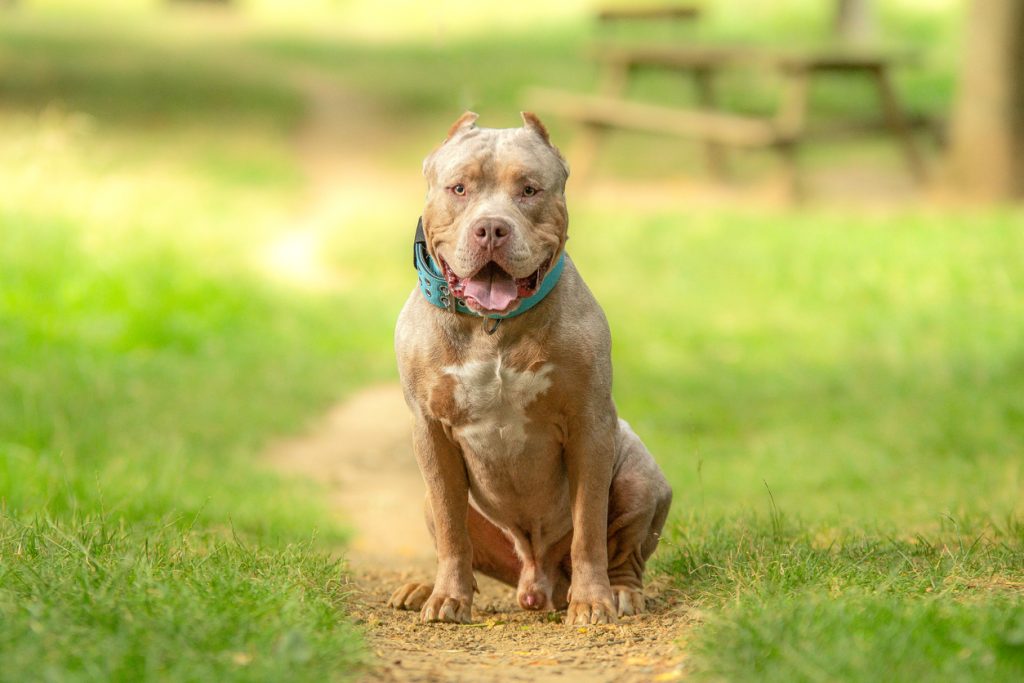There are four dog breeds that have been banned in the UK since the 1991 Dangerous Dog Act was passed, criminalising ownership of these breeds. This act allows the Police to become involved if a dog is suspected of being dangerous.
The Dangerous Dog Act (DDA) of 1991 was put into place after a rise of attacks on people resulting in serious injury or fatality. The act is split into sections; Sections 1 prohibits the ownership of certain types of dogs, unless exempted which is intended to have a preventative effect. Prosecutions can be brought before a court based on the physical appearance of the dog. Section 3 states that it is a criminal offence to allow any dog to be out of control or behaving dangerously in a public place. Legal action can be taken against the owner or the person in charge of the dog at the time, if the dog does injure a person.
These dogs share similar traits of strength and large size making them popular with the illegal dog fighting trade leading to their ban in the UK and various other countries. Dog breeds are banned by the government to prevent illegal activity such as dog fighting as well as to prevent attacks on humans. The ban in 1991 came into fruition after a series of dog attacks with 11 serious attacks just that year.
What were the four dogs banned in 1991?
Pit Bull Terrier – These dogs were developed in the 19th century from a bulldog and a terrier for hunting, capturing and restraining feral livestock. Due to the Pit Bulls body and jaw strength they were often used as fighting dogs being treated poorly in order to induce an aggressive temperament. Metro News states that these dogs are banned in various countries including Australia, France, Israel, Hong Kong, many states in the US and cities in Canada.
Japanese Tosa – The Tosa was bred in the 1800’s with breeds such as the Bulldog and Mastiff to produce this heavy, agile and powerful dog. In the mid-19th century they were being bred as a fighting dog and so were quickly banned in the UK despite a small number being in the country.
Dogo Argentino – Developed in Argentina in the 1920s as a working dog. The Independent reports that this dog was produced for pack-hunting and big-game hunting coming from several dog breeds including an old fighting dog of Cordoba, the Viejo Perro de Pelea Cordobes, a dog which was nearly extinct at the time. The breed was banned in the UK due to them being imported into the country for illegal dog fighting.
Fila Brasileiro – More commonly known as the Brazilian Mastiff which is known in Brazil for its loyalty, Purina states. This dog is very strong and intelligent, originally used as a working dog and would catch their prey and hold it until the hunter arrived. This breed was also banned as a preventative measure due to dog being imported for illegal dog fighting.
On September 15th 2023, Rishi Sunak announced the plans to ban American Bully XLs in the UK. The UK government have set requirements and restrictions in place for the breed and owners of the breed to follow. From 31st December 2023 it will be against the law to sell, breed or rehome an XL bully breed. From 1 February 2024 it will be illegal to own an XL Bully in England and Wales unless your dog has a valid Certificate of Exemption. If you are found with a banned dog without a valid certificate of exemption you face an unlimited fine or up to 6 months in prison. The dog in possession will be taken away and in the absence of certification the dog will be destroyed.
There are legal requirements that must be followed by owners to ensure the safety of these dogs.
What are the next steps?
- Apply for the Certificate of Exemption before 31 January 2024.
- Pay the fee of £92.40 for each dog you are keeping.
- Obtain third party liability insurance.
- Make sure the dog is neutered by a vet and that they confirm this by completing the correct form and returning it to Defra.
- Make sure your dog is microchipped with up to date details – this was made compulsory in the UK in 2016
- It will be compulsory for XL bullies to wear a muzzle and be on the lead in all public spaces so start muzzle training your dogs. Organisations such as, Battersea, Blue Cross, Dog’s trust, RSPCA and more view muzzle training as an imperative part of any dogs training so they can associate the muzzle with positive situations. Muzzles not only keep people safe they can help the dog feel safe too. All organisations above have useful, free information on how to muzzle train your dog, if you are still unsure ask your vet for advice.
- Safely socialise your dog in a protected environment. If they are not already it is a good idea to gradually socialise your dog so they do not become agitated and stressed in any situations whether that’s at the park or when a visitor enters their home.
- Ensure that where you keep you dog is secure with no broken fence panels or gaps in the bush so they cannot escape out and become lost and anxious.
- The owner of a banned dog must be over 16 years old and be able to provide proof of insurance and the certificate of exemption on the day of or within 5 days of being asked by the Council dog Warden or a Police Officer.
In regards to breeding, it will be illegal to do so. However, if the dog has already conceived them it will not be illegal for the puppies to be brought to full term. Although, it will be illegal to rehome or sell these puppies if they are born after 31 December. The government is allowing a 9-week period until this ban comes into force allowing puppies which were bred before this legislation was introduced to be legally sold. This allows for the puppies at the correct age of 8 weeks to be given a chance to find a home.
The XL bully is the first dog to be banned since the 1991 act due to a rise in attacks, as the Guardian reports that at least three of the seven attacks this year were linked to XL Bullies. As the breed is not officially recognised by the Royal Kennel Club there is no certainty of how many XL Bullies there are in the UK. The Bully Watch, a group which campaigned for the ban of the breed stated that they account for less than 1% of all owned dogs across the country.
The effectiveness of a ban is uncertain as data from the Metropolitan Police shows from 2015-16 which was 25 years after the DDA was introduced, pit bull terriers were responsible for 19% of dog attacks across London. The legislation will reduce the number but not eliminate the breed entirely and the concern of many is that a new breed will be introduced in the coming years.






















